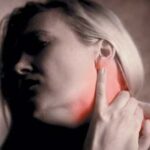 Researchers at the National University of Singapore surveyed the use of CAM in residents of Singapore who had head and neck cancer.
Researchers at the National University of Singapore surveyed the use of CAM in residents of Singapore who had head and neck cancer.
Here are their findings compared to other countries where similar studies have been conducted.
First, the details.
- 93 consecutive head and neck cancer patients were surveyed using an interviewer-administered questionnaire.
And, the results.
- The prevalence of CAM use was 68%.
- The typical CAM user compared with non-users was…
- Female
- Better educated
- Younger
- 83% perceived CAM to be effective.
The bottom line?
These findings are similar to the results of an another survey from Singapore published this year, where 55% of patients used CAM after diagnosis of any cancer.
In that study, Chinese ethnicity, tertiary education, age greater than 65 years, and previous CAM use were independent predictors of CAM use.
Contrast the high prevalence of CAM use among Singaporeans with head and neck cancer with these countries.
- Israel in 2005: 6%
- Acupuncture (4 patients)
- Reiki (2)
- Naturopathy (2)
- Hypnosis (1)
- Shiatsu (1)
- Chiropractic treatment (1)
- Homeopathy (1)
- Selenium (1)
- Europe in 2006: 23%
- Herbal medicine (47%)
- Medicinal teas (24%)
- Vitamins/minerals (12%)
- Visualization (12%)
- United Kingdom in 2005: 23%
- Herbal medicine (47%)
- Medicinal teas (24%)
- Vitamins/minerals (12%)
- Visualization (12%)
- United States in 2004: 91%
- Most commonly prayer, relaxation and exercise
- Canada in 1999: 23%
- Herbal medicine (51%)
- Manual healing methods (10%)
- Pharmacological treatments (17%)
- Traditional folk remedies (6%)
- Mind-body techniques (8%)
- Diet and nutrition (9%)
5/24/10 21:09 JR